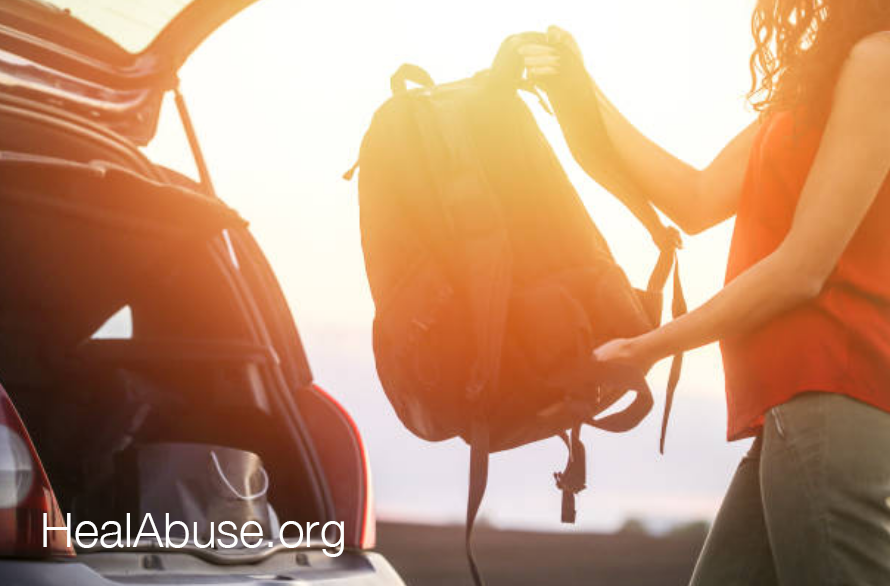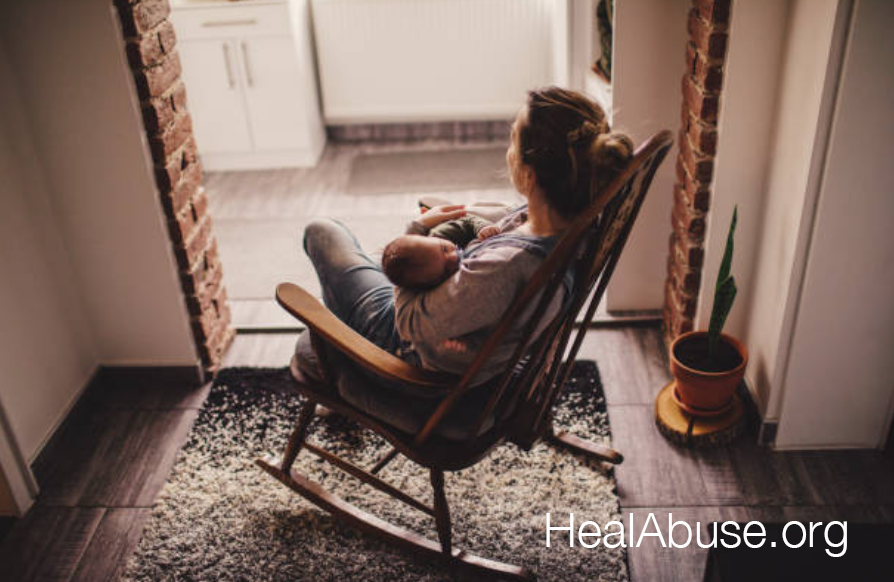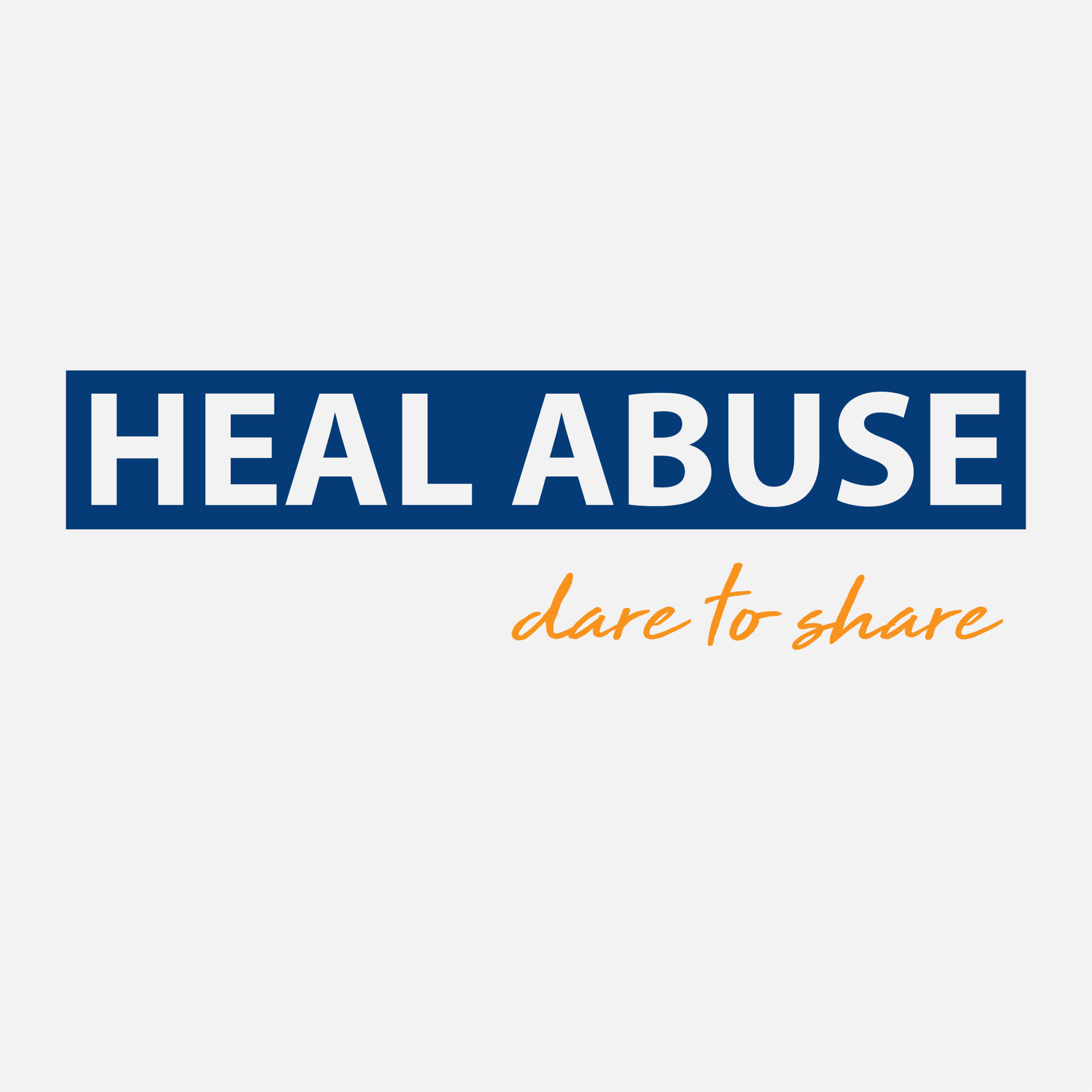How to safely leave an abusive relationship


Written by admin
Leaving an abusive relationship can be quite difficult. Victims of abuse often do not realize that they are being abused or they are led to believe that they are the cause of their own abuse. Once you realize that you are being abused and you are ready to leave, you should do so quickly and carefully to avoid potential escalation and violence that could endanger your life. Don’t be afraid to ask for help, use any and all resources available to you, and get out safely.


Personally, I left for alł the right reasons, (the main reason being wanting to protect my child from both direct abuse and witnessed abuse) but in all the wrong ways (I hardly did anything listed in the safety-plan), and my son and I are still paying for the consequences. Having had this information beforehand would have made a huge difference. I don’t wish upon anyone what my son and I have been through and are still going through, so please read carefully.
*After reading advice on how to safely leave an abusive relatioonship, I have come to find one of the most comprehensive list is the one on WikiHow. However, it is a bit confusing for some how they put the advice in 5 different methods to chose from. For many victims of abuse, the prospect of having to choose a method for leaving, especially when it’s not specified what method suites what person/circomstances, can seem overwhelming. Here is a summery of the most important information form their article, with some added information that can prove to important or even be vital. Credit goes to WikiHow and Paul Chernyak, LPC who co-authored the article.
Check out this youtube playlist on various tips on how to safely leave an abusive relationship


Never forget that walking away from something unhealthy is brave, even if you stumble a little on your way out the door.
Staying safe before and after leaving abuse
Safety planning is a crucial step for someone involved in an abusive relationship. These practical plans can help you stay safe while you are still with your abuser, as you prepare to leave, and after the relationship has ended. While still in an abusive relationship, your safety is of primary importance. Safety planning involves how to cope with emotions, tell friends and family about the abuse, take legal action and more.
A good safety plan will have all of the vital information you need and be tailored to your unique situation, and will help walk you through different scenarios.
Although some of the things that you outline in your safety plan may seem obvious, it’s important to remember that in moments of crisis your brain doesn’t function the same way as when you are calm. When adrenaline is pumping through your veins it can be hard to think clearly or make logical decisions about your safety. Having a safety plan laid out in advance can help you to protect yourself in those stressful moments.
Safety while you are still with your abuser
when there’s physical violence
- Identify your partner’s use and level of force so that you can assess the risk of physical danger to you and your children before it occurs.
- Identify safe areas of the house where there are no weapons and there are ways to escape. If arguments occur, try to move to those areas.
- Don’t run to where the children are, as your partner may hurt them as well.
- If violence is unavoidable, make yourself a small target. Dive into a corner and curl up into a ball with your face protected and arms around each side of your head, fingers entwined.
- If possible, have a phone accessible at all times and know what numbers to call for help. Know where the nearest public phone is located. Know the phone number to your local shelter. If your life is in danger, call the police.
- Let trusted friends and neighbours know of your situation and develop a plan and visual signal for when you need help.
- Teach your children how to get help. Instruct them not to get involved in the violence between you and your partner. Plan a code word to signal to them that they should get help or leave the house.
- Tell your children that violence is never right, even when someone they love is being violent. Tell them that neither you, nor they, are at fault or are the cause of the violence, and that when anyone is being violent, it is important to stay safe.
- Practice how to get out safely. Practice with your children.
- Plan for what you will do if your children tells your partner of your plan or if your partner otherwise finds out about your plan.
- Keep weapons like guns and knives locked away and as inaccessible as possible.
- Make a habit of backing the car into the driveway and keeping it fueled. Keep the driver’s door unlocked and others locked — for a quick escape.
- Try not to wear scarves or long jewelry that could be used to strangle you.
- Create several plausible reasons for leaving the house at different times of the day or night.
- Call a domestic violence hotline periodically to assess your options and get a supportive understanding ear.
.


Prepairing to leave your abuser
Find a secure means of seeking help. Phone records and call logs can be checked. Computers’ browser histories can be traced. You can try erasing your call log or internet cookies and history. Some browsers also allow you to set them to “private” mode. But if you are worried that your abuser is monitoring your communication with others, you might want to find another computer or phone to use.
Most public libraries offer computers with internet access to community members. This could be a good place to start.
You may want to get a prepaid cellular phone. This could come in handy while looking for help and later, when you actually leave.
You could also use a friend or neighbor’s computer or phone. If necessary, make an excuse such as your own computer or phone being broken.

Contact an organization that can help
Most areas have local resources to help victims of abuse. If you are not sure where to start or if you want to talk to someone about planning to leave an abusive relationship, begin with the following resources.
- In the US: National Domestic Violence Hotline 1-800-799-7233(SAFE)
Men in the US and Canada can contact The Domestic Abuse Helpline 1-888-743-5754 - In the UK: Women’s Aid 0808 2000 247
Men in the UK can contact ManKind Initiative - In Australia: 1800Respect 1800 737 732
Men in Australia can contact One in Three - In South Africa: You can call Powa 011 642 4345/6
- Worldwide: The International Directory of Domestic Violence Agencies
Discuss with a help organisation if you should move to shelter. Know where to go as you leave and have a backup plan if your partner finds our or the plan gets interrupted.
If you haven’t done so before, start talking to your friends and relatives about your situation. Reach out to someone you trust, or someone you sued to trust before the abuse and ask for help. Try to be specific with what you would like for them to do for you (such as let you stay with them, keep your “escape bag,” call the police for you if you give them a “code word,” etc.)
Most abusers isolate their victims, make them feel helpless and insecure and “train” them to not trust anyone. A big part in healing is to start talking about your situation and the support from friends and family can prove to be crucial when leaving.
Make an escape plan
Establish emergency funds or credit. If your abuser keeps money tightly controlled, withholds money from you, or does not allow you to earn your own money, it can be difficult to establish an emergency fund. Keep any change you can keep, return items to a store for cash back, hide any money given to you as a gift, or find other ways to build some emergency cash. If you can’t get emergency cash, try applying for a credit card in your name, but be sure that you have statements sent to a PO Box, a work address, or even to a friend’s house so that your abuser does not find out. Do not access your credit card account from your home computer.
- Pack and hide a “getaway bag” You should have an emergency bag with necessities in it. Be sure that you hide the bag very well (you may even want to leave it at someone else’s house.) You pack light, but include the following in your bag:
- Changes of clothing for you and any children
- Copies of important documents (birth certificates, passports, driver’s license, bank or credit card account information, pay stubs, social security card(s),
If time is available, also take:
- Citizenship documents (such as your passport, green card, etc.)
- Titles, deeds and other property information
- Medical records
- Children’s school and immunization records
- Insurance information
- Addressbook
- Copy of marriage license, birth certificates, will and other legal documents
- Verification of social security numbers
- Medications for you or your children
- Special personal items like photographs, personal possessions or jewellery
- A prepaid cellphone (don’t take your usual cellphone with you as it can be tracked and delete your call and search history before you go)
- Jewellery or other small items you could sell in need of money
- Non-perishable snacks

The red allert mode is supposed to be used in rare life threatening situations, not as your default setting. -Ami Elsius

Gather evidence of abuse
You should certainly not provoke instances of abuse solely to gather evidence, but it may help you take legal action in the future if you do collect evidence of abuse. Take pictures of injuries, destroyed objects, or a room that was trashed during a violent episode, keep bloodied clothing or towels, and collect any documentation about hospital visits due to abuse.
Also advisable to keep detailed a diary of the abuse.
Whenever you are injured in an episode of violence, you should seek medical treatment in the emergency room and keep the records. This could be key to being awarded an order of protection, custody or your children, or a contested divorce.
- Keep a journal of all violent incidences, noting dates, events and threats made, if possible. Keep them in a hidden safe place.
- Plan for what you will do if your children tell your partner of your plan or if your partner otherwise finds out about your plan.
- Plan with your children and identify a safe place for them, like a room with a lock or a friend’s house where they can go for help. Reassure them that their job is to stay safe, not to protect you.
- Contact a local help organisation to find out about laws and other resources available to you before you have to use them during a crisis.
- Acquire job skills or take courses at a community college as you can.
- Try to set money aside or ask friends or family members to hold money for you.
- Hide an extra car key and make sure it’s still there before you attempt to leave.
- Park the car for quick access, keep the drivers door unlocked (just before you plan to escape) and the other doors locked (unless you have children that you bring with you)
- Try to avoid using the homes of next-door neighbours, close family members and mutual friends.

Decide whether you should take your children with you
You should talk to an attorney before you leave about taking your children with you. While you should absolutely keep them away from harm, you do not want to harm your potential to keep them safe in the future by harming your chances of getting or maintaining custody of your children.
Make plans for your pets
Make a plan for pets Too many people (particularly women) stay in an abusive relationship because they fear for what will happen to their pets if they leave. Some shelters may allow you to take a pet with you. If you cannot, you may be able to leave the pet with a neighbor or friend or even take it to a no-kill shelter for safekeeping. In the end, you need to realize that your own life is more important than that of a pet, however difficult that can be to swallow.
Leave during a safe window of time
You should most likely leave while your abuser is away from home (unless a violent episode necessitates an immediate escape). Plan and prepare to leave at a time when your abuser will be out of the house, ideally for a few hours. Give yourself plenty of time to gather your emergency bag and get to a safe place before your abuser even realizes that you are gone.
You do not have to leave a note or an explanation for why you are leaving. It is okay to just leave.
If you do not have access to your own transportation, make arrangements to have someone pick you up. If you fear that you are in imminent danger, you can have the police pick you up and remove you from your home.
Don’t take your cell phone with you
Copy down important numbers in another place (or memorize them.) Your cell phone could be set for tracking without your knowledge, so leaving it behind can help you leave behind your abuser.
Consider getting a prepaid cell phone and having it packed in your emergency bag. This could allow you to make important calls related to your escape and safety without potentially leading your abuser to you.
Get away quickly without being followed
While you should likely go straight to your safe place (a shelter or to stay with a friend or family member), you may want to take an indirect route and be observant to be sure that you are not being followed. Try to merge into traffic, take side roads, turn around and retrace part of your route, and notice any cars that seem to be going the same way you are going.
Create a false trail after you leave
If you think that your abuser will try to follow you, think about creating a false trail after you have left. Use your own cell phone to place calls to a hotel at least 6 hours away from your true destination. Use a shared credit card or bank account to prepay for the hotel room, and have an email confirmation sent to a shared or monitored email account. You can also book a rental car in the same place or leave a message for a real estate agent and ask her to call you back at your home phone number.
Do not take these steps before you leave, as they could tip your abuser off as to the fact that you are going to leave, which could incite a violent reaction.
If you use your own cell phone to create a false trail, be sure to discard it or abandon it before you get to where you are really going.
Go directly to a safe place
Wherever your safe place is, go there. The benefit of going to a shelter or an abuse victim support organization is that they have employees or volunteers who are trained to help you with the “what now?” that you will likely feel after you leave.
If you do go to stay with a friend or family, you should still consider reaching out to a victim support organization, which can direct you towards legal help, counseling, support groups, employment training, and financial support.

Leave during a safe window of time
You should most likely leave while your abuser is away from home (unless a violent episode necessitates an immediate escape). Plan and prepare to leave at a time when your abuser will be out of the house, ideally for a few hours. Give yourself plenty of time to gather your emergency bag and get to a safe place before your abuser even realizes that you are gone.
You do not have to leave a note or an explanation for why you are leaving. It is okay to just leave.
If you do not have access to your own transportation, make arrangements to have someone pick you up. If you fear that you are in imminent danger, you can have the police pick you up and remove you from your home.
Have a plan to ensure your immediate safety
No matter how careful you are, there may be a chance that your abuser could follow you or track you down. Have a plan for dealing with that contingency. Your plan should probably involve calling the police immediately.
If your abuser shows up and begs you to come back home, do not go. At this point, the abuser will likely say anything to lure you back home, but you will not be safe if you go back.
Request extra layers of protection
Some companies require only your Social Security Number and your mother’s maiden name to access secure information. If you were married to your abuser, he or she likely has this information. Ask if the company offers any additional account protection, or provide an answer to security questions that is inaccurate (but that you still remember). For example, you could provide your paternal grandmother’s maiden name instead of your mother’s.
.

Change your work habits
If you have a job, talk to your employer about making changes to ensure your safety. Some states have laws that require employers to make reasonable accommodations for survivors of abuse.[20] Find out if you can change locations, work different hours, or have extra personal security when traveling from your workplace to your vehicle.
Have an unlisted number and confidential address. When you have moved to a new home, get an unlisted home phone number. For mail, get a P.O. Box or ask the post office about your state’s confidential address program. These steps will make it more difficult to track down your specific location.
If you have children, be sure to talk to them about keeping their home address confidential and not sharing it with your abuser or with strangers.
Change all of your passwords
Any account you have online could be a window into personal information. To be safe, change all of your passwords for any account; financial accounts, social media accounts, email accounts, etc. In fact, you may want to disable social media accounts temporarily (or permanently) and change your email address.
Contact an attorney
You will likely need an attorney to support you through the legal battle(s) that you may have to face. If you were married to your abuser, if you had children together, or if you are an immigrant, you will need to make legal changes that an attorney can help with.
If you do not have money, you may still be able to get an attorney. Some attorneys will include a suit for fees from your abuser in the event of a court case in your favor. Some may also take your case “pro bono,” or as an act of charity.

If you are brave enough to say goodby, life will reward you with a hello. – Paulo Coehlo
Ask a shelter for guidance or resources
Most shelters will provide guidance towards legal help. Some even offer free legal services for survivors of domestic violence. Even if you are not staying at a shelter, you should contact the organization (most have a help line) to inquire about free or low-cost legal services.
Some organizations help with immigration services for immigrant victims of domestic violence; don’t stay in an abusive situation because you fear deportation. You have the right to be free of violence even if you are an immigrant.
File for a personal protection order (PPO)
A PPO is a court-backed document that allows you legal protection from a past abuser. To file for a PPO, take any and all evidence of abuse you have as well as a letter describing the abusive situation and the relationship between you and your abuser to your local courthouse. They should provide you with further instructions about how to fill out the appropriate paperwork to get a legal PPO.
After you file for your PPO, if it is approved, it will need to be legally served to your abuser, and you will need to file a proof of service with the court. Talk to the clerk at the courthouse about how to do this.
Once you have a PPO, keep it with you at all times. If your abuser violates the terms of the PPO, you may need to show the PPO to the police.
Be aware that a PPO does not guarantee your protection. It makes it easier to have your abuser arrested in the event of further incidents, but a PPO is often not enough to keep a violent abuser away from you completely.
Take the appropriate steps for divorce or child custody
Once you have left your abuser, you will need to cut legal ties. If you were unmarried and did not have children, this may be as easy as canceling joint accounts. If you were married and had children, you may face complicated legal battles that will require seeing your abuser (in the courtroom if nowhere else). Be prepared for this by leaning on the support systems you now have in place—the shelter, your legal counsel, your friends and family, and a therapist.
File assault charges
If you have been recently assaulted, or if you have records of abuse (police and/or medical records), file assault charges against your abuser. You might be able to file for assault without physical evidence (particularly if you can provide witnesses to your abuse), but it will be much easier if you collected physical evidence of assault before you left.
You will likely have a case against your abuser that has multiple levels (for example, you might file for divorce, sue for child custody, file for assault, and request a PPO). The complicated nature of these charges necessitates a lawyer.


Just when the caterpillar thought the world was over, it became a butterfly.
Go to therapy
Whether you prefer the personal attention of a therapist or the community of support from group therapy (or both!), you need to get help. Surviving abuse is not easy, and getting out takes a lot of strength. You need to lean on others to heal effectively, stay strong, and prepare yourself for healthier relationships in the future.
After you leave your abuser
If the offender is leaving your home:
- Change your locks and phone number.
- Change your work hours and usual route to and from work.
- Change the route taken to transport children to and from school.
- If you are leaving or moving to a new residence: Consider renting a post office box or using the address of a friend for your mail. Be aware that addresses are on restraining orders and police reports. Be careful to whom you give your new address and phone number.
- Change your work hours, if possible.
- Alert school authorities of the situation. Consider changing your children’s schools.
- If you need to get a restraining order, RDAP can help. After you have the order in place:
- Keep a certified copy of your restraining order with you at all times.
Inform friends, neighbors and employers that you have a restraining order in effect.
Give copies of the restraining order to employers, neighbors and schools along with a picture of the offender.
Call law enforcement to enforce the order if necessary.
In general, the following measures can help you stay safe after leaving an abuser. - Reschedule appointments that the offender is aware of.
- Use different stores and frequent different social spots.
- Alert neighbours and request that they call the police if they feel you may be in danger.
- Talk to trusted people about the violence.
- Replace wooden doors with steel or metal doors. Install security systems if possible.
- Install a motion sensitive lighting system.
- Tell people you work with about the situation and have your calls screened by one receptionist if possible.
- Tell people who take care of your children who can pick up your children. Explain your situation to them and provide them with a copy of the restraining order, if you have one.
- Call the telephone company to request caller ID for any landlines. Ask that your phone number be blocked so that if you call anyone, neither your former partner nor anyone else will be able to get your new, unlisted phone number.

Safety-plan with your children
If you are in an abusive relationship, a safety plan should include ways that your children can stay safe when violence is happening in your home. It’s key to remember that if the violence is escalating, you should avoid running to the children because your partner may hurt them as well.
- Planning for Violence in the Home
- Teach your children when and how to call 911.
- Instruct them to leave the home if possible when things begin to escalate, and where they can go.
- Come up with a code word that you can say when they need to leave the home in case of an emergency — make sure that they know not to tell others what the secret word means.
- In the house: identify a room they can go to when they’re afraid and something they can think about when they’re scared.
- Instruct them to stay out of the kitchen, bathroom and other areas where there are items that could be used as weapons.
- Teach them that although they want to protect their parent, they should never intervene.
Help them make a list of people that they are comfortable talking with and expressing themselves to.
Enroll them in a counseling program. Local service providers often have children’s programs.

Safety-planning when pregnant
Pregnancy is a time of change. Pregnancy can be full of excitement but also comes with an added need for support. It’s natural to need emotional support from a partner, as well as perhaps financial assistance, help to prepare for the baby and more.
If your partner is emotionally or physically abusive toward you, it can make these months of transition especially difficult. Thankfully, there are resources available to help expecting women get the support needed for a safe, healthy pregnancy.
According to the CDC, intimate partner violence affects approximately 1.5 million women each year and affects as many as 324,000 pregnant women each year. Pregnancy can be an especially dangerous time for women in abusive relationships, and abuse can often begin or escalate during the pregnancy.
Planning for Unsupervised Visits
If you have separated from an abusive partner and are concerned for your childrens’ safety when they visit your ex, developing a safety plan for while they are visiting can be beneficial.
Brainstorm with your children (if they are old enough) to come up with ways that they can stay safe using the same model as you would for your own home. Have them identify where they can get to a phone, how they can leave the house, and who they can go to.
If it’s safe to do, send a cell phone with the children to be used in emergency situations — this can be used to call 911, a neighbor or you if they need aid.
Planning for Safe Custody Exchanges
Avoid exchanging custody at your home or your partner’s home.
Meet in a safe, public place such as a restaurant, a bank/other area with lots of cameras, or even near a police station.
Bring a friend or relative with you to the exchanges, or have them make the exchange.
Perhaps plan to have your partner pick the children up from school at the end of the day after you drop them off in the morning – this eliminates the chances of seeing each other.
Emotional safety plan as well – figure out something to do before the exchange to calm any nerves you’re feeling, and something after to focus on yourself or the kids, such as going to a park or doing a fun activity.
How to Have These Conversations
Let your child know that what’s happening is not their fault and that they didn’t cause it. Let them know how much you love them and that you support them no matter what. Tell them that you want to protect them and that you want everyone to be safe, so you have to come up with a plan to use in case of emergencies. It’s important to remember that when you’re safety planning with a child, they might tell this information to the abusive partner, which could make the situation more dangerous (ex. “Mom said to do this if you get angry.”) When talking about these plans with your child, use phrases such as “We’re practicing what to do in an emergency,” instead of “We’re planning what you can do when dad/mom becomes violent.”
How can you get help?
- If you’re pregnant, there is always a heightened risk during violent situations.
- If you’re in a home with stairs, try to stay on the first floor.
- Getting into the fetal position around your stomach if you’re being attacked is another tactic that can be instrumental in staying safe.
- Doctor’s visits can be an opportunity to discuss what is going on in your relationship.
- If your partner goes to these appointments with you, try to find a moment when they’re out of the room to ask your care provider (or even the front desk receptionist) about coming up with an excuse to talk to them one-on-one.
- If you’ve decided to leave your relationship, a health care provider can become an active participant in your plan to leave.
- If possible, see if you can take a women-only prenatal class. This could be a comfortable atmosphere for discussing pregnancy concerns or could allow you to speak to the class instructor one-on-one.

Strenght is removing your kids from a toxic environment, NOT learning to live with it “for the sake of the kids”.

Emotional safety plan
Often, emphasis is placed on planning around physical safety, but it’s important to consider your emotional safety as well. Emotional safety can look different for different people, but ultimately it’s about developing a personalized plan that helps you feel accepting of your emotions and decisions when dealing with abuse. Below are some ideas for how to create and maintain an emotional safety plan that works for you.
Seek out supportive people
A caring presence such as a trusted friend or family member can help create a calm atmosphere to think through difficult situations and allow for you to discuss potential options.
Identify and work towards achievable goals
An achievable goal might be calling a local resource and seeing what services are available in your area, or talking to one of our advocates at The Hotline. Remember that you don’t have to do anything you aren’t comfortable with right now, but taking small steps can help options feel more possible when you are ready.
Create a peaceful space for yourself
Designating a physical place where your mind can relax and feel safe can be good option when working through difficult emotions that can arise when dealing with abuse. This can be a room in your house, a spot under your favorite tree, a comfy chair by a window or in a room with low lights.
Remind yourself of your great value
You are important and special, and recognizing and reminding yourself of this reality is so beneficial for your emotional health. It is never your fault when someone chooses to be abusive to you, and it has no reflection on the great value you have as person.
Remember that you deserve to be kind to yourself
Taking time to practice self-care every day, even if it is only for a few minutes, really creates space for peace and emotional safety. It’s healthy to give yourself emotional breaks and step back from your situation sometimes. In the end, this can help you make the decisions that are best for you.

Check out or playlist on on various tips on how to safely leave an abusive relationship in our community
Related Articles
Related









0 Comments